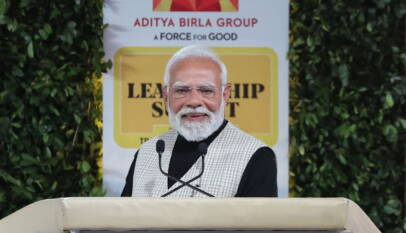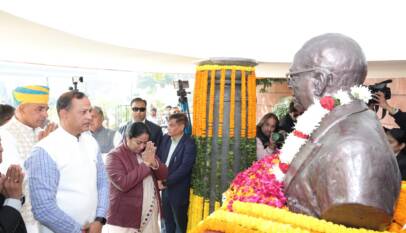Vexillology – Evolution of the Indian Flag
By Suvro Sanyal.
(vii) 1921 – At the All India Congress Committee session which took place at Bezwada (now Vijayawada), a flag was presented before Gandhiji by an Andhra youth Pingali Venkaiah. The flag was made up of two colours Red and Green representing the two major communities Hindus and Muslims. At that time Gandhiji suggested adding a white strip in the flag that will represent the other communities of India and the spinning wheel to symbolise the progress of the nation.

(viii) 1931 – In the history of the flag, this year is important. A resolution was passed pertinent to the adoption of a Tricolour flag as our national flag. It consisted of three colours including Saffron, White, and Green with Gandhiji’s spinning wheel at the centre. It also reiterated that no communal significance was to be interpreted.

(ix) Early 1947 – In the early 1947, Lord Mountbatten (Governor General Louis Mountbatten) had proposed the flag of the Congress for the flag of India, effectively but with a Union Jack in the canton.
It was rejected by Jawaharlal Nehru, on the grounds that he felt that Congress’ nationalist members would see the inclusion of the Union Jack as pandering to the British.

(x) 23rd. June, 1947 – A Constituent Assembly was formed entasked to select a flag for independent India. The Assembly had set up an ad hoc committee headed by Rajendra Prasad, and including Maulana Abul Kalam Azad, Sarojini Naidu, C. Rajagopalachari, K. M. Munshi and B. R. Ambedkar as its members.
(xi) 14th. July, 1947 – The committee that was formed on 23rd. June, 1947 headed by Rajendra Prasad recommended that the flag of the Indian National Congress be adopted as the National Flag of India with suitable modifications, so as to make it acceptable to all parties and communities. It was also resolved that the flag should not have any communal undertones. The spinning wheel of the Congress flag was replaced by the Ashoka Chakra from the Lion Capital of Ashoka.
According to Sarvepalli Radhakrishnan, the Chakra was chosen as it was the representative of Dharma and Law.
(xii) 22nd. July, 1947 – Pandit Jawaharlal Nehru proposed at the Constituted Assembly, a horizontal rectangular Tricolour flag, the colours being of India Saffron, White and India Green; with the Ashoka Chakra, a 24-spoke wheel, in Navy Blue at its centre.
Jawaharlal Nehru also presented two Flags, one in Khadi-Silk and the other in Khadi-Cotton, to the assembly. The resolution was approved unanimously.
It served as the National Flag of the Dominion of India between 15th. August, 1947 and 25th. January, 1950, fondly known as “Tiranga”

(xiii) 15th. August, 1947 – India achieved independence from the British Raj following the success of the Indian National Congress led Indian independence movement under the leadership of Mahatma Gandhi.
This was enacted through the provisions of the Indian Independence Act 1947, an act of the Parliament of the United Kingdom which transferred legislative sovereignty to the Indian Constituent Assembly, came into effect.
British India was partitioned into the two new independent dominions of the British Commonwealth, Dominions of India and Pakistan.
India became a constitutional monarchy with King George VI as head of state until its transition into a Republic, along with the Earl Mountbatten as Governor-General. Without a standalone constitution, its laws were based on the Government of India Act 1935 and governed by the Constituent Assembly of India.
(xiv) 29th. August, 1947 – A seven-member drafting committee was appointed to draft a permanent constitution, with Dr. B R Ambedkar as chairman. A draft constitution prepared by the committee was submitted to the Constituent Assembly on 04th. November, 1948. The constitution replaced the Government of India Act 1935 as the governing document of India, thus turning the nation from a dominion into a Republic, After the draft was discussed and debated, the constituent assembly adopted the constitution on 26th. November, 1949.
(xv) 26th. January, 1950 – The constitution came into effect on 26th. January, 1950 with Doctor Rajendra Prasad becoming the first President of India, and the constituent assembly became the Parliament of India under the transitional provisions of the new constitution. The date commemorates the attainment of Purna Swaraj on this day in 1930 proclaimed by Indian National Congress.

Mavericknews30 has launched a series of article starting with History of Flags and featuring ” Know Your National Flag”, in anticipation of Independence Day on August 15th, Stay tuned for the next article!
Log on : www.mavericknews30.com
Follows us on : Twitter @mavericknews30
YouTube : @MarvickNews30
Your Legal Rights When a Flight Is Delayed or Cancelled in India
New Delhi, Dec 5: With widespread flight disruptions continuing to affect air travel acros…




















